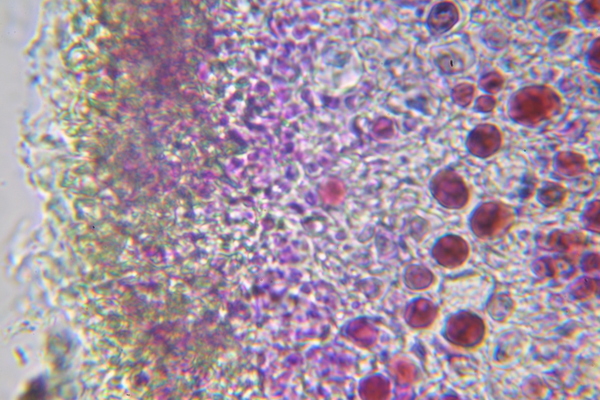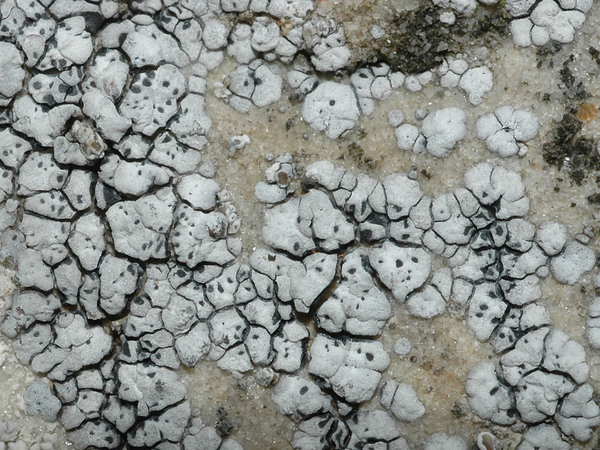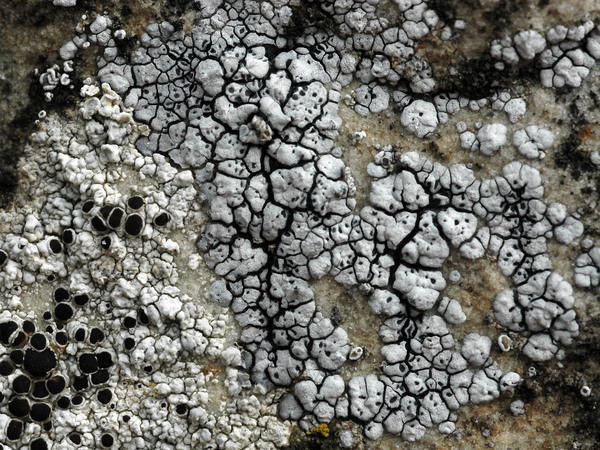Acarospora umbilicata Bagl.
Mem. R. Acc. Sc. Torino, ser. 2, 17: 397, 1857.
Synonyms: Acarospora percaenoides (Nyl.) Flagey; Acarospora rufidulocinerea Hue; Acarospora vesuviana Licop.; Acarospora vulcanica Jatta; Heppia cavalierii Werner; Lecanora percaenoides Nyl.
Distribution: N - VG, TAA (Nascimbene & al. 2022), Piem, VA (Piervittori & Isocrono 1999), Lig (Roccardi 2006). C - Tosc, Umb (Genovesi 2003b, 2011, Ravera & al. 2006), Laz (Bartoli 1997b, Genovesi & al. 2011), Mol (Garofalo & al. 1999, Caporale & al. 2008), Sar (Rizzi & al. 2011, Giordani & al. 2013). S - Camp (Garofalo & al. 1999, Ricciardi & al. 2000, Aprile & al. 2002, Nimis & Tretiach 2004), Pugl (Nimis & Tretiach 1999), Bas (Nimis & Tretiach 1999), Cal (Puntillo 1996), Si (Nimis & al. 1996b, Ottonello & Puntillo 1995, Ottonello & Romano 1997, Grillo 1998, Grillo & Caniglia 2004, Ottonello & al. 2011).
Description: Thallus crustose to subsquamulose, episubstratic, areolate, often forming extensive, up to 13 cm wide patches. Areoles 0.3-3 mm wide, usually of different sizes in the same thallus, at first attached by the entire lower surface, then often becoming subsquamulose with free margins, scattered to contiguous, flat to slightly convex, angular in central parts, often sublobate at margins, brown with usually a darker rim, more or less densely white-pruinose (densely pruinose thalli appear white, sparingly pruinose thalli brown, some areoles are often pruinose in central parts, epruinose at margins); lower surface pale to dark brown. Epicortex very thin to absent; cortex 25-50 μm thick, brown in upper part, colourless in lower part; algal layer continuous or rarely interrupted by c. 10 μm thick hyphal bundles, thin below the hymenium; medulla c. 100 μm thick, white, of thin-walled hyphae; lower cortex present only in marginal parts, distinctly brown c. 10 μm thick. Apothecia 0.1-0.4 across, 1-5(-9) per squamule, immersed, often coalescing, initially punctiform, then with a round to angular, concave to flat, smooth, reddish brown, rarely white-pruinose disc and an inconspicuous thalline margin; proper margin brown-black, contrasting with the paler disc. Proper exciple expanding up to 20 μm around the disc, partially merging with cortex, not forming a parathecial crown, IKI-; epithecium brown, c. 10 μm high; hymenium colourless, 85-110(-135) μm high, the hymenial gel hemiamyloid, K/I+ light blue fading to light red; paraphyses coherent, sparingly branched in upper part, 1-1.5 μm thick at mid-level, the apical cells 2-3 μm wide; subhymenium 30-50 μm high IKI+ blue (euamyloid); hypothecium c. 10 μm high. Asci 100-200-spored, clavate, the apical dome K/I-, 60-100 x 10-16 μm. Ascospores 1-celled, hyaline, subcylindrical, 4-5(-7) x 1-2 μm. Photobiont chlorococcoid. Spot tests: cortex K-, C+ red, KC+ red, P-. Chemistry: cortex with gyrophoric acid.Note: a mild-temperate, mainly Mediterranean-Atlantic lichen found on steeply inclined, sunny faces of basic siliceous substrata, on roofing tiles and brick. Most common in Tyrrhenian Italy (e.g. on monuments and walls around Rome), below the montane belt.
Growth form: Crustose
Substrata: rocks
Photobiont: green algae other than Trentepohlia
Reproductive strategy: mainly sexual
Commonnes-rarity: (info)
Alpine belt: absent
Subalpine belt: absent
Oromediterranean belt: absent
Montane belt: extremely rare
Submediterranean belt: rare
Padanian area: extremely rare
Humid submediterranean belt: common
Humid mediterranean belt: rather common
Dry mediterranean belt: very rare

Predictive model
Herbarium samples


Andrea Moro; Owner: Department of Life Sciences, University of Trieste
Italy, Lazio, Roma, Ruines of ancient Tusculum, above Frascati
18/03/2017
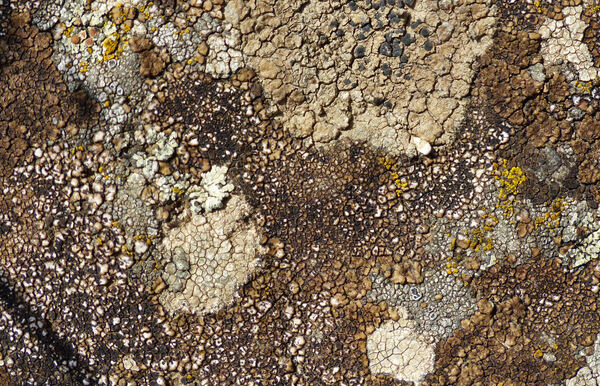

Andrea Moro; Owner: Department of Life Sciences, University of Trieste
Italy, Lazio, Roma, Ruines of ancient Tusculum, above Frascati
18/03/2017
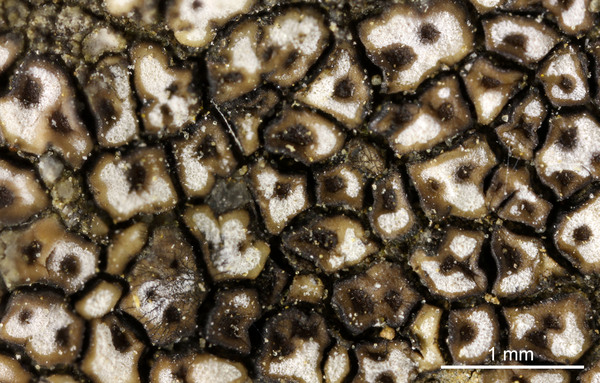

Felix Schumm – CC BY-SA 4.0
[14118], Portugal, Azoren, Terceira, Santa Barbara, Küstenfelsen, 38°40,746' N, 27°13,942' W, 0-41 m. Leg. Aptroot & Schumm 13.07.2008.
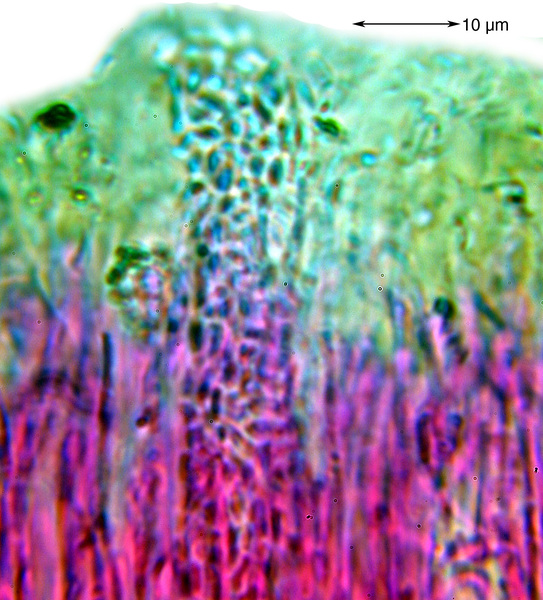

Felix Schumm – CC BY-SA 4.0
[14118], Portugal, Azoren, Terceira, Santa Barbara, Küstenfelsen, 38°40,746' N, 27°13,942' W, 0-41 m. Leg. Aptroot & Schumm 13.07.2008.
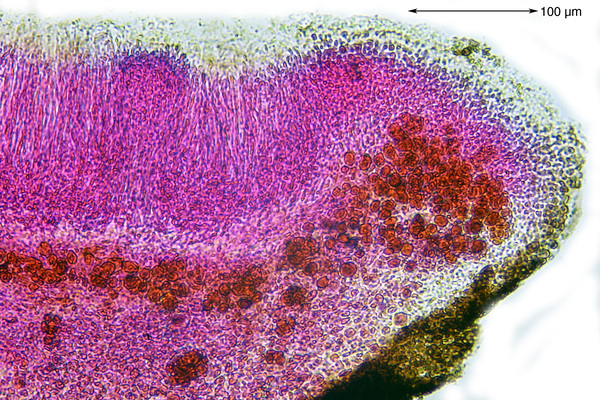

Felix Schumm – CC BY-SA 4.0
[14118], Portugal, Azoren, Terceira, Santa Barbara, Küstenfelsen, 38°40,746' N, 27°13,942' W, 0-41 m. Leg. Aptroot & Schumm 13.07.2008.
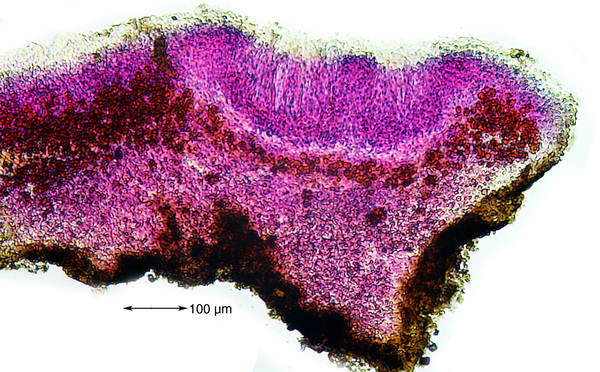

Felix Schumm – CC BY-SA 4.0
[14118], Portugal, Azoren, Terceira, Santa Barbara, Küstenfelsen, 38°40,746' N, 27°13,942' W, 0-41 m. Leg. Aptroot & Schumm 13.07.2008.
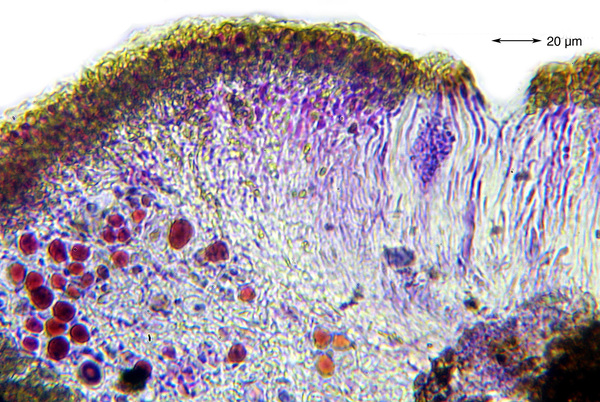

Felix Schumm – CC BY-SA 4.0
[14118], Portugal, Azoren, Terceira, Santa Barbara, Küstenfelsen, 38°40,746' N, 27°13,942' W, 0-41 m. Leg. Aptroot & Schumm 13.07.2008.


Felix Schumm – CC BY-SA 4.0
[14118], Portugal, Azoren, Terceira, Santa Barbara, Küstenfelsen, 38°40,746' N, 27°13,942' W, 0-41 m. Leg. Aptroot & Schumm 13.07.2008.


Felix Schumm – CC BY-SA 4.0
[14118], Portugal, Azoren, Terceira, Santa Barbara, Küstenfelsen, 38°40,746' N, 27°13,942' W, 0-41 m. Leg. Aptroot & Schumm 13.07.2008.
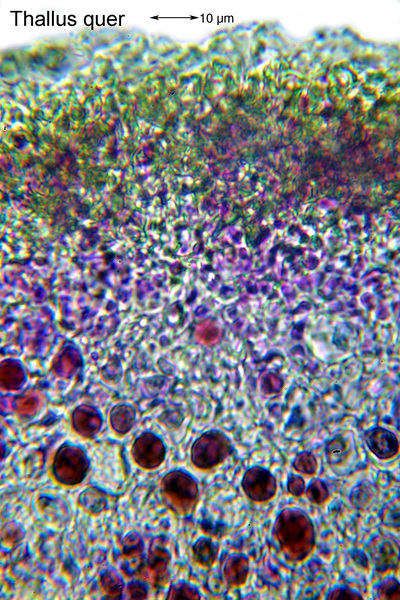

Felix Schumm – CC BY-SA 4.0
[14118], Portugal, Azoren, Terceira, Santa Barbara, Küstenfelsen, 38°40,746' N, 27°13,942' W, 0-41 m. Leg. Aptroot & Schumm 13.07.2008.
Growth form: Crustose
Substrata: rocks
Photobiont: green algae other than Trentepohlia
Reproductive strategy: mainly sexual
Commonnes-rarity: (info)
Alpine belt: absent
Subalpine belt: absent
Oromediterranean belt: absent
Montane belt: extremely rare
Submediterranean belt: rare
Padanian area: extremely rare
Humid submediterranean belt: common
Humid mediterranean belt: rather common
Dry mediterranean belt: very rare

Predictive model
| Herbarium samples |


Andrea Moro; Owner: Department of Life Sciences, University of Trieste
Italy, Lazio, Roma, Ruines of ancient Tusculum, above Frascati
18/03/2017


Andrea Moro; Owner: Department of Life Sciences, University of Trieste
Italy, Lazio, Roma, Ruines of ancient Tusculum, above Frascati
18/03/2017


Felix Schumm – CC BY-SA 4.0
[14118], Portugal, Azoren, Terceira, Santa Barbara, Küstenfelsen, 38°40,746' N, 27°13,942' W, 0-41 m. Leg. Aptroot & Schumm 13.07.2008.


Felix Schumm – CC BY-SA 4.0
[14118], Portugal, Azoren, Terceira, Santa Barbara, Küstenfelsen, 38°40,746' N, 27°13,942' W, 0-41 m. Leg. Aptroot & Schumm 13.07.2008.


Felix Schumm – CC BY-SA 4.0
[14118], Portugal, Azoren, Terceira, Santa Barbara, Küstenfelsen, 38°40,746' N, 27°13,942' W, 0-41 m. Leg. Aptroot & Schumm 13.07.2008.


Felix Schumm – CC BY-SA 4.0
[14118], Portugal, Azoren, Terceira, Santa Barbara, Küstenfelsen, 38°40,746' N, 27°13,942' W, 0-41 m. Leg. Aptroot & Schumm 13.07.2008.


Felix Schumm – CC BY-SA 4.0
[14118], Portugal, Azoren, Terceira, Santa Barbara, Küstenfelsen, 38°40,746' N, 27°13,942' W, 0-41 m. Leg. Aptroot & Schumm 13.07.2008.


Felix Schumm – CC BY-SA 4.0
[14118], Portugal, Azoren, Terceira, Santa Barbara, Küstenfelsen, 38°40,746' N, 27°13,942' W, 0-41 m. Leg. Aptroot & Schumm 13.07.2008.


Felix Schumm – CC BY-SA 4.0
[14118], Portugal, Azoren, Terceira, Santa Barbara, Küstenfelsen, 38°40,746' N, 27°13,942' W, 0-41 m. Leg. Aptroot & Schumm 13.07.2008.


 INDEX FUNGORUM
INDEX FUNGORUM
 GBIF
GBIF
 DOLICHENS
DOLICHENS


